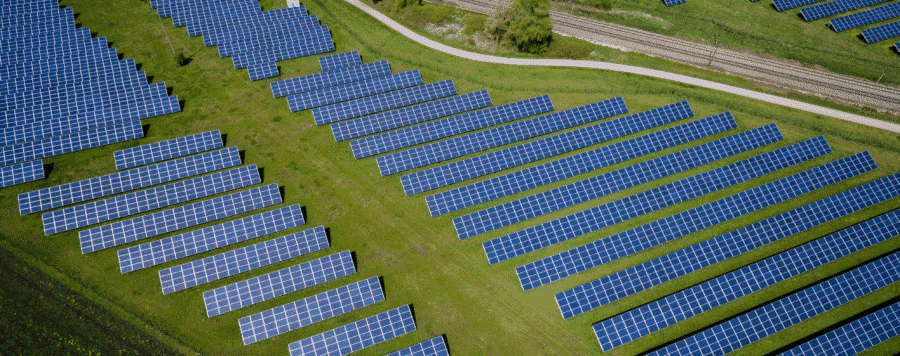
Update February 11th, 2022: The final decision on Net Metering in California has been delayed indefinitely. Read our latest coverage on the issue here.
Update June 3rd, 2021: The California Assembly has rejected the bill, AB 1139, that was being pushed by the utilities to lower the net metering payout rates in the state.
Launched back in 1995, the Net Metering (NEM) program was created as a system to encourage people to invest in solar systems/energy as a way to help them to recover their investment over time by offering credits back for any energy sent to the grid from their home or commercial solar systems.
After a few revisions and updates over the years, the California Net Metering program is now at it’s NEM 2.0 version but the California Public Utilities Commission (CPUC) is looking to update the program yet again, which could greatly affect the solar industry in California moving forward.
In this article, we will be outlining the proposed changes to the CA Net Metering program, the pros and cons, and how you can make your voice heard as to the future of solar in California.
Proposed Changes to California’s Net Metering
According to Canary Media, California utilities have proposed a plan for NEM 3.0, NEM 2.0’s successor that would cut solar export compensation down to one quarter of what it is today, and introduce a requirement for solar panel users to be on a certain rate schedule. Additionally, NEM 3.0 would add monthly fixed charges/fees based on the size of the solar system installed, on top of the current fixed charges that homeowners already have to pay under NEM 2.0.
On the other side of the fence, solar industry groups are proposing that NEM 3.0 reduces rates based on the rate at which the state hits certain solar energy and energy storage targets (CALSSA), while SEIA and Vote Solar would like to see a step-down of the rate over time. These groups would also like to ensure that people who are currently benefiting from either NEM 1.0 or NEM 2.0 stay on their respective programs and aren’t forced to move on to the new plan.
One thing that every group involved in these changes is in agreement about, however, is that the proposed changes need to benefit low-income solar customers in one way or another, as the current California Net Metering program does little to benefit people who have low electricity bills to begin with.
The Downside
If the utilities in California get their way, solar will get much more expensive for homeowners looking to benefit from this clean energy source, which means that solar deals are likely to get harder for solar companies to close next year. NEM 3.0, in this case, would also favor off-grid solar which can get get very expensive and is usually something reserved for higher-income customers.
The utility’s proposed changes might also cause a trickle-down effect to other solar mandates and programs in the state such as the requirement that all new constructions require solar panels, since the incentive that the home’s value will increase is negated by all the proposed new fees and monthly charges. This means that there will be much more to evaluate, debate, and update than just the CA Net Metering program.
Finally, making solar more expensive to acquire for the average homeowner is in no way aligned with the state’s clean energy goals of shifting to 60% renewable energy by 2030, and finally 100% by 2050.
The Upside
These proposed changes to CA Net Metering will greatly benefit low-income homeowners, as well as people in the state who don’t have rooftop solar systems of their own. The old program unfairly benefitted wealthier homeowners who could afford large systems and then sell off all their excess power to the grid for the credits while everyone else footed the bill. According to Fix the Cost Shift, this amounted to an extra $3 billion bill that non-participants in the program were left paying yearly.
While the utilities getting their way could be catastrophic for the industry, the final decision is set for January 2022, leaving solar installers with enough time to create a sales boost for themselves. If NEM 3.0 goes through as proposed, solar companies can use this opportunity to create a sense of urgency with homeowners who are on the fence about signing on the dotted line.
No one is sure whether NEM customers on the 1.0 and 2.0 versions will be forced to move up to 3.0 at this time, which means that solar installers can explain that if homeowners don’t move forward now, they will miss out on the opportunity for some great credits today, and possibly continue to benefit, or worse, be locked out forever.
Solar groups and utilities agreeing on making it easier for low-income homeowners to benefit from solar also opens up a whole new market for installers to scoop up and sell to after the changes are implemented since they have been left out under NEM 2.0 for so long.
How You Can Help
While the proposed changes to California’s Net Metering affect everyone in the state and not just solar system owners, they will also greatly impact the bottom lines of solar installers and solar companies.
Solar professionals can help make their voices heard by joining Fix the Cost Shift’s coalition, signing the petition at https://www.savecaliforniasolar.org/, and by joining CALSSA’s Solar Defenders list.
In Closing
The fight to save solar in California has just begun, but the industry needs your help today. While there are ways for solar companies to benefit from the updates to California’s Net Metering program, the consensus from those in the know is that this could greatly impact the accessibility of solar in the state and make it harder for Californians to hit their ambitious clean energy goals moving forward.
Solargraf’s solar proposal software, however, is here to help you make sure you close as many deals as possible under this new program. With features to help you create proposals at lightning speed such as AutoPitch, Good, Better, Best, Shade Reports and Shading Analysis, as well as financing integrations and speedy permits, we have all you need to handle whatever comes next.



 United States
United States Germany/Austria
Germany/Austria Brazil
Brazil Netherlands
Netherlands